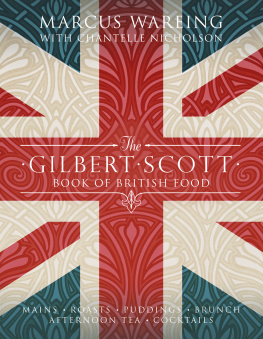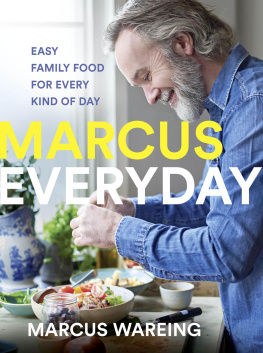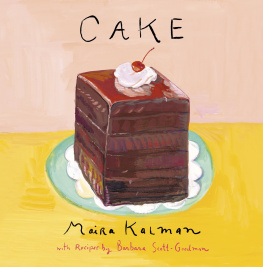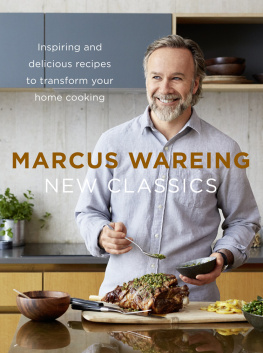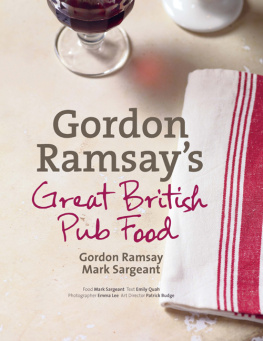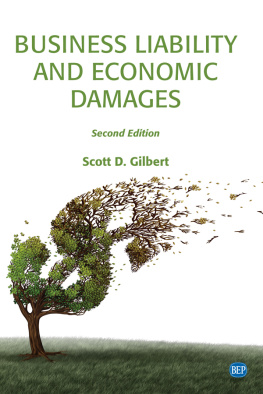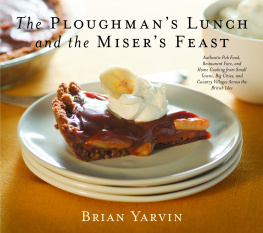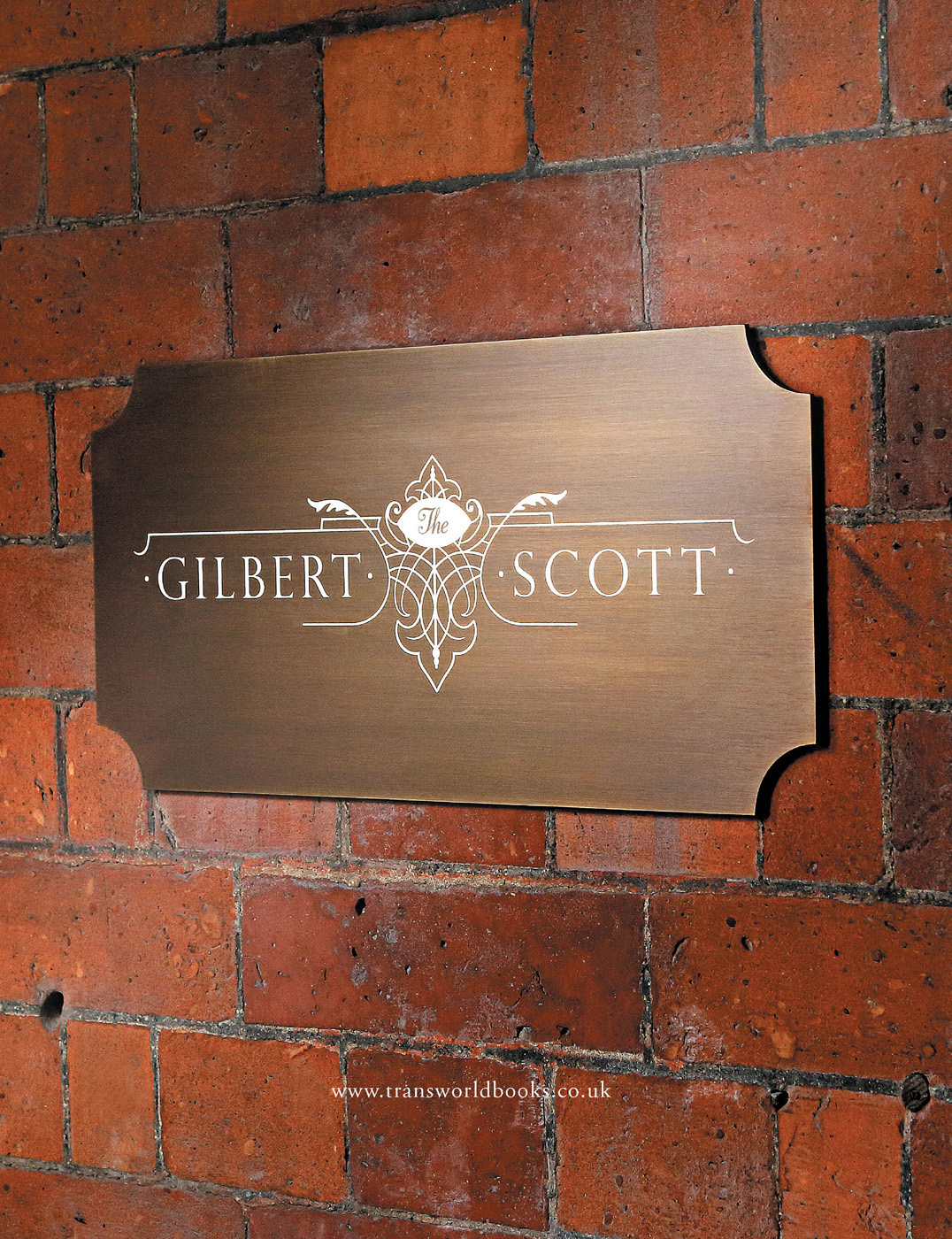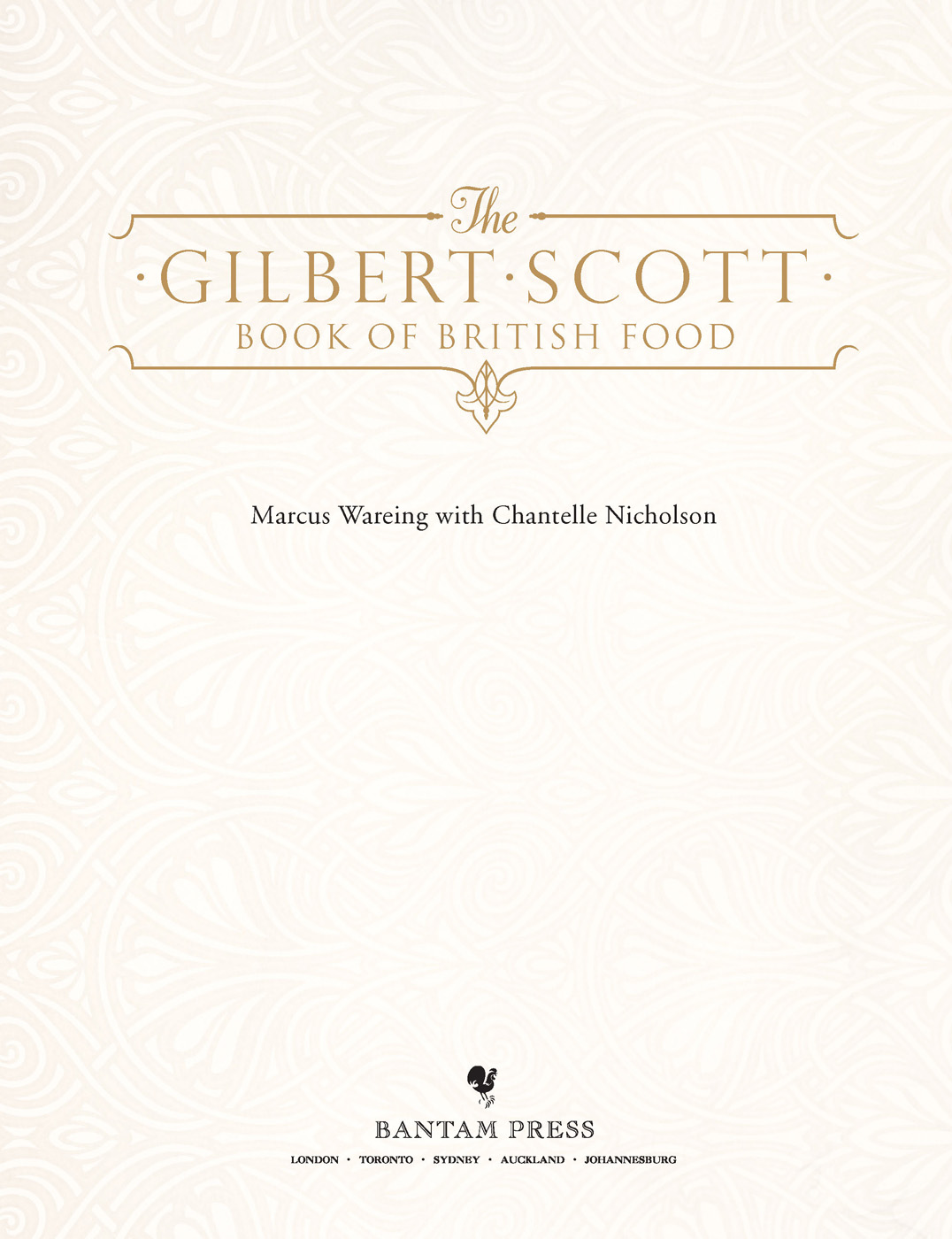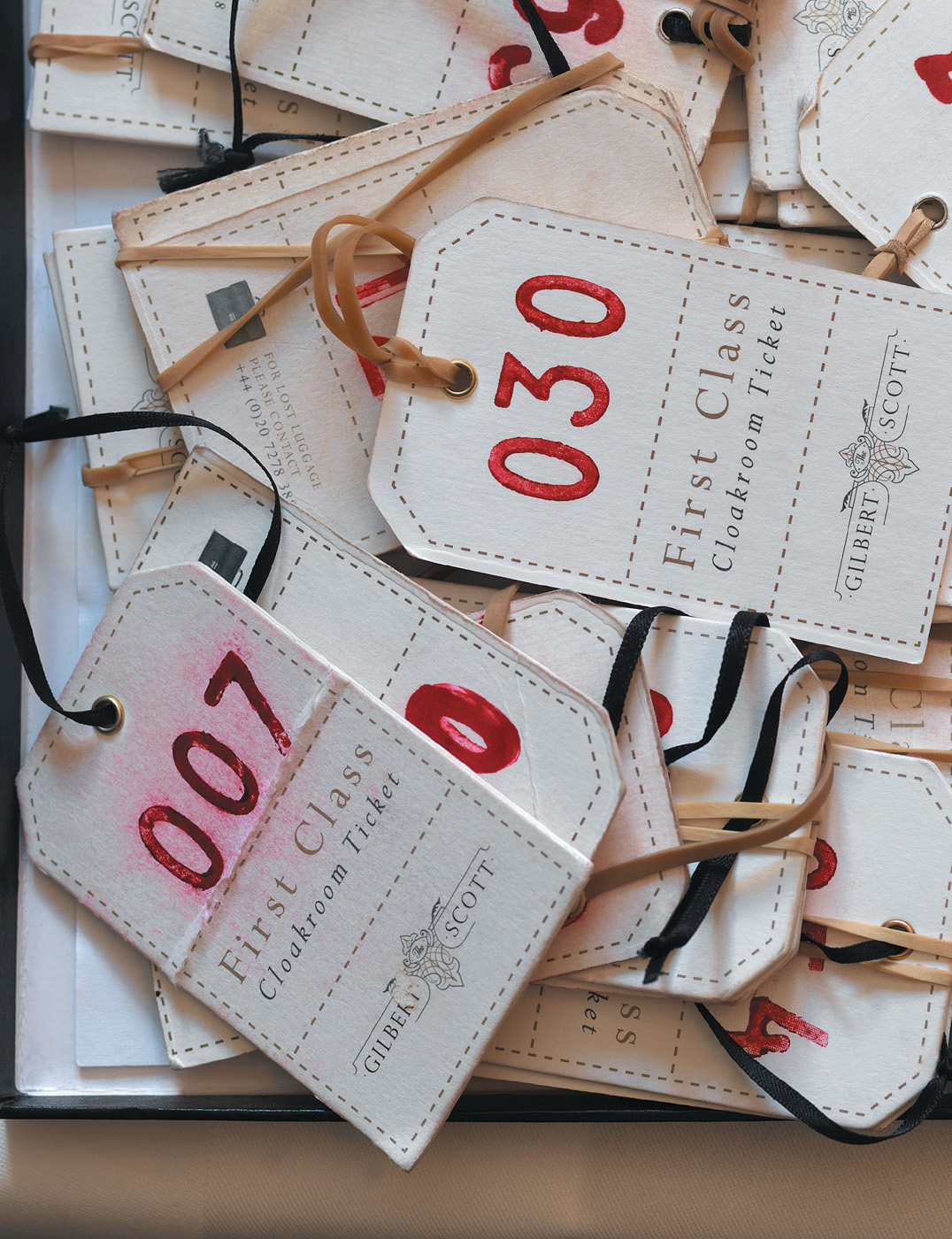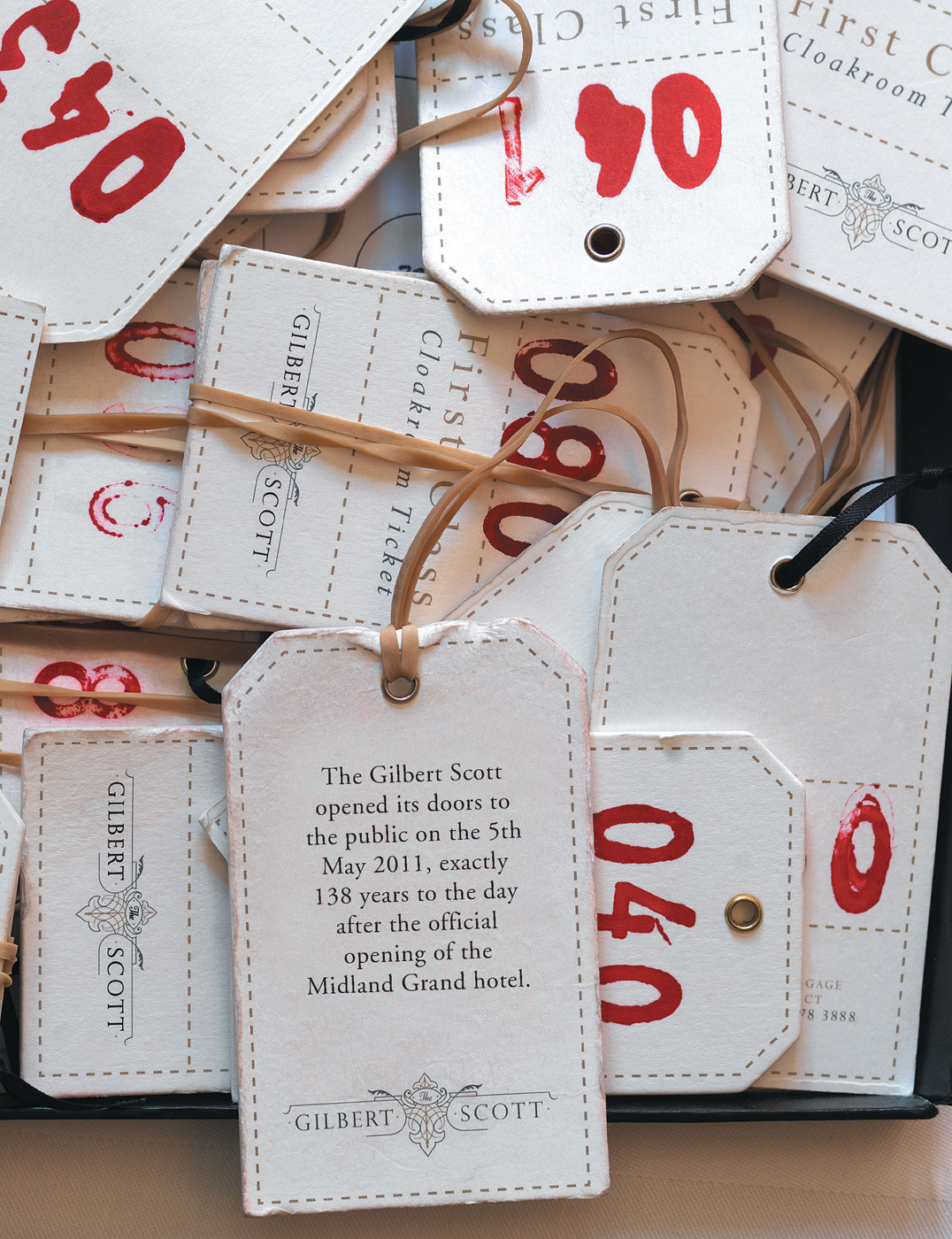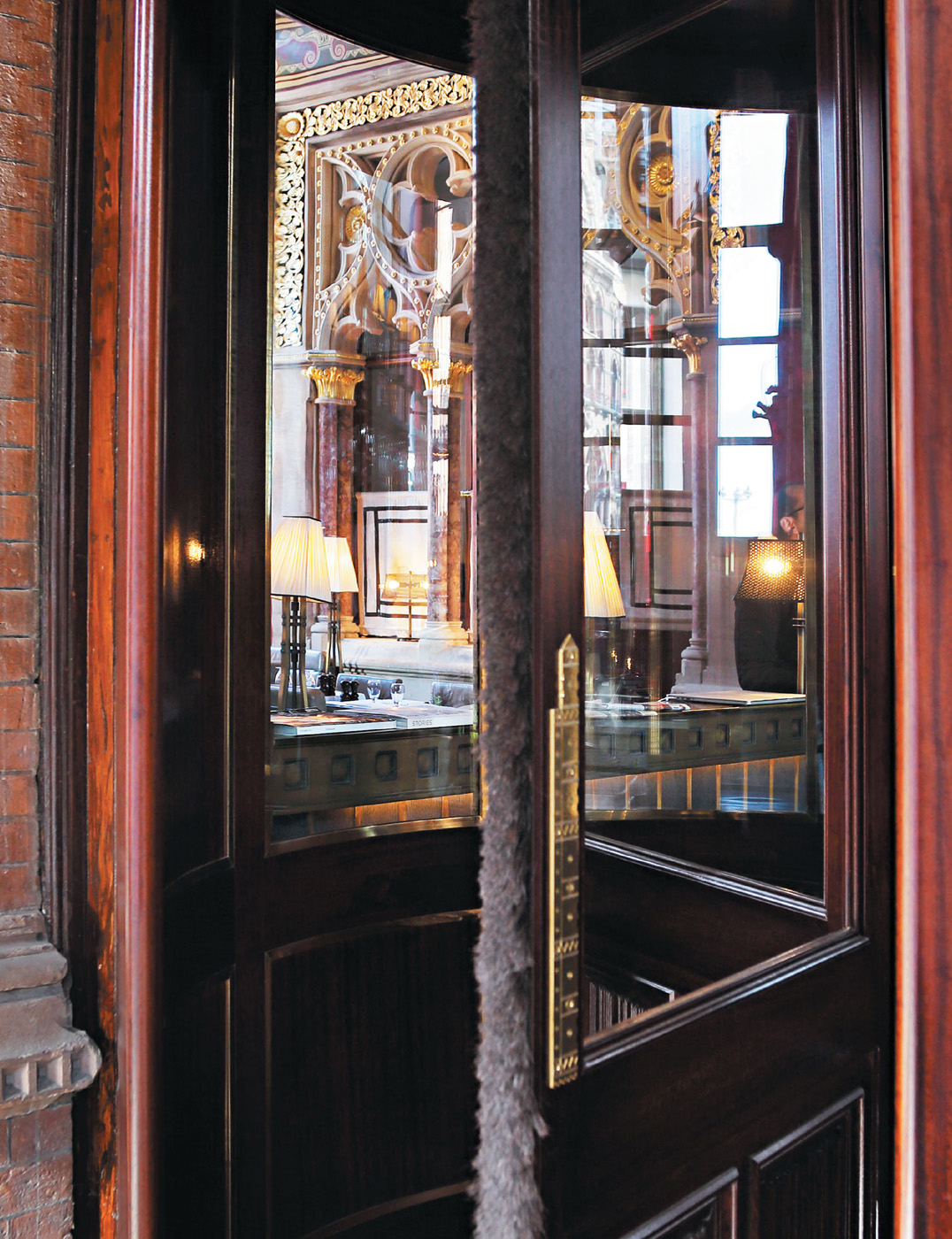CONTENTS

About the Book
The Gilbert Scott Book of British Food features a collection of over one hundred mouth-watering traditional recipes re-imagined for you to cook at home.
From soups and salads to roasts and pies, from tarts and crumbles to cakes and cocktails, great British ingredients combine to produce a wonderful range of dishes. Youll find Yorkshire fishcakes, Dorset jugged steak, cock-a-leekie pie, Mrs Beetons barbecue chicken, London Pride battered cod, gingerbread pudding, Kendal mint cake choc ices and the best lemon drizzle cake youll ever taste in Marcus Wareings magnificent book.
With stunning photography throughout, The Gilbert Scott Book of British Food is a glorious tribute to the best of British.
About the Author
Marcus Wareing began his restaurant career at The Savoy, aged just eighteen, before moving to work alongside Albert Roux at Le Gavroche. In 1999, with Gordon Ramsays backing, he opened Ptrus in The Berkeley hotel in Londons Knightsbridge. Ptrus won its second Michelin star in 2007 as well as the AAs ultimate accolade of five rosettes and was relaunched as Marcus Wareing at The Berkeley in 2008. In 2011 Marcus opened his second restaurant, The Gilbert Scott. He lives in London with his wife and three children.
To The Gilbert Scott team, past, present and future. To your creativity, passion, commitment, hard work and great personalities (and wonderful cocktails!).
List of Recipes
INTRODUCTION

How it all began
In 1865 the Midland Railway company held a competition for the design of a hotel, with the brief that it needed to add lustre to their soon-to-be-completed St Pancras station. A number of architects submitted their schemes, with George Gilbert Scotts wondrous 300-bedroom design being declared the winner. (A leading Gothic Revivalist, Scott restored and designed many iconic buildings all over the Empire, including the Albert Memorial in London.) Construction of the Midland Grand hotel began in 1868 and it opened officially on 5th May 1873 138 years to the day before the opening of The Gilbert Scott restaurant.
The hotel oozed extravagance. The Victorian decor was luxurious, with extensive decoration in gold leaf and open fires in every room. Ornate stencilling and flamboyant wallpapers embellished every inch of the hotel. In the Coffee Room (which is now The Gilbert Scott restaurant), pillars of polished limestone lined the walls, their gilded capitals carved with conkers, pea pods and bursting pomegranates.
For a building of this size and style, which required the use of gas lighting, every trick was used in the construction to allow as much natural light in as possible: huge rooms with huge windows; ornate, Gothic fanlights above every door; and wonderfully arched stairwells. The most famous of these, widely considered the most majestic in the country, is the Grand Staircase, which is a fantastic example of high-Victorian Gothic decoration. Altogether, the total cost of the building added up to 438,000 (approximately 438m today).
The Midland Grands reputation was quickly cemented and it was widely recognized as one of Londons leading hotels, the most expensive apart from The Langham on Portland Place. Guests of note during the hotels heyday included Jesse Boot (of Boots the chemist), the actress Marie Lloyd, Commodore Cornelius Vanderbilt, one of Americas richest men, and the American inventor and industrialist George Pullman.
Innovations didnt stop upon the hotel opening: in 1899 a specially designed revolving door was fitted in the hall entrance, and in the same year electric lifts were installed, replacing the original water-driven ones.
After a wondrous 62 years of welcoming guests, the hotel became too expensive to maintain and heat. Another factor contributing to its decline was that its handsome rooms came without bathrooms. When the hotel was built the fact that there were bathrooms at all (five in total, with nine baths for the 300 rooms) was a novelty.
Unfortunately, as en-suite bathrooms became more and more commonplace, it was impossible to introduce the necessary plumbing in order to bring the Midland up to the standards of its competitors. Despite novelties such as a Moroccan coffee house and an in-house orchestra, the hotel couldnt be saved, and it closed its doors in 1935.
During the Second World War the building was bombed three times in one month but as credit to the strength of its construction it emerged almost completely unscathed. In 1948 it became the headquarters for British Transport Hotels and remained so until a failed fire certificate forced them out in 1985.
What at its opening was called the most perfect in every possible respect in the world came to be known as a gigantic haunted house, outdated and obsolete. There were attempts to demolish the building, until a Grade I listing in 1967 ensured its survival. In 19935, 9 million of public money was spent on restoring the exterior. But the building itself remained unused.
When it was under threat of demolition, Sir John Betjeman said that the Midland Grand hotel was too beautiful and too romantic to survive. He was mistaken: it has survived for precisely these reasons and has now been lovingly restored to its former grandeur, once again welcoming hotel guests, now as the St Pancras Hotel.
The Gilbert Scott
The Gilbert Scott came about due to one mans vision that of Harry Handelsman. Harry saw deeper than the dilapidated, run-down and tired monstrosity in a not-so-great part of town. Due to his vision, I along with my team am lucky enough to operate a restaurant and bar in what I consider is Londons most beautiful building.
The incarnation of The Gilbert Scott began in November 2009 when I received an email from a commercial lettings agent inviting me to look at a restaurant site in St Pancras. Given Mayfair had been my stomping ground since I began my restaurant career, I was a little hesitant to go so far north. But I thought it was worth a look. My wife Jane, my then Senior Sous Chef/Operations Manager, Chantelle Nicholson, and I went to check it out. We were given a tour of the building by a fascinating man named Royden Stock. What he did not know about the building or its architect, Sir George Gilbert Scott, is not worth knowing.
After the show-round we went next door to the British Library for a coffee. I asked Jane and Chantelle what their thoughts were. There was a little moment of silence and then we all grinned and agreed in unison that it was the perfect site for our next venture. We met Harry a few weeks later to make our pitch explaining why we wanted the site and what we thought we could do with it. Thankfully, Harry liked our vision and granted us the site.

